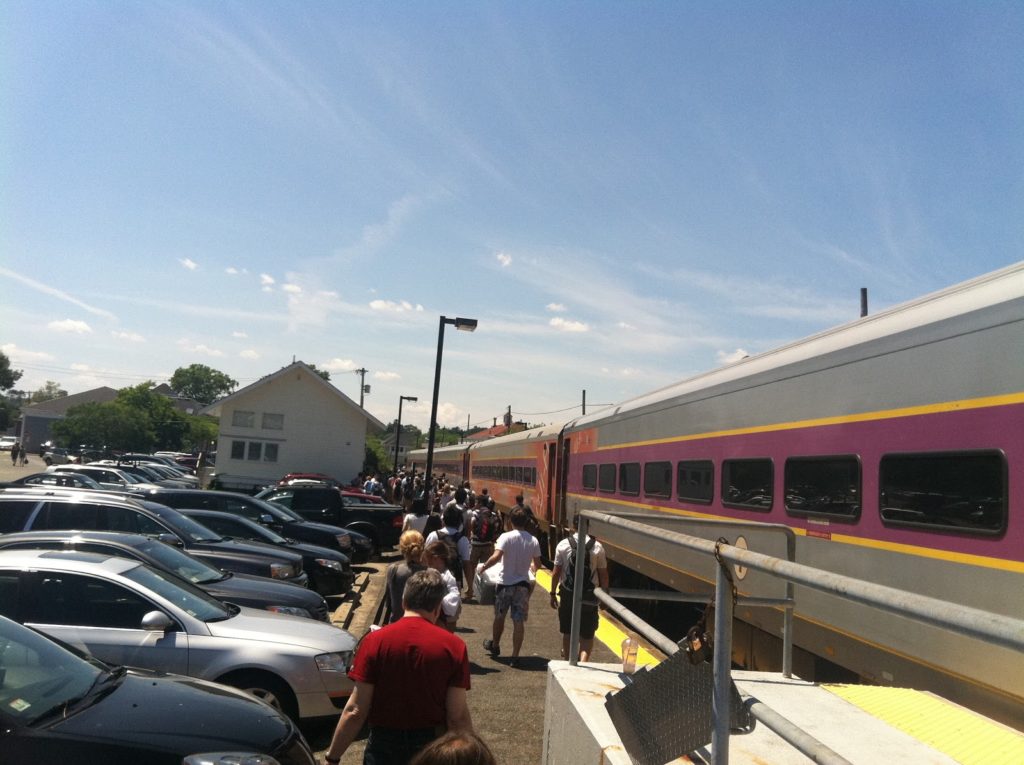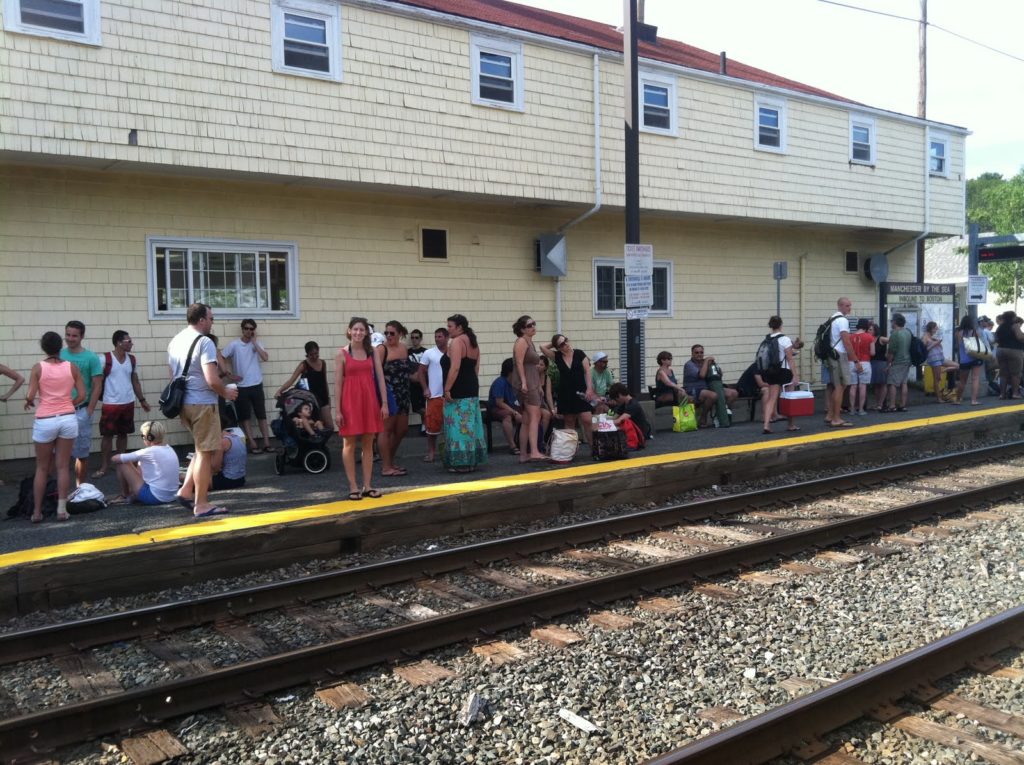It’s 8 a.m. on a Saturday, the sun is shining bright and the mercury is approaching 80˚. In Boston, these are signs for hundreds of thousands of city dwellers to move north and south and find refuge on the hot sands and cold waters of miles of beaches. While the states most picturesque beaches are probably on Cape Cod, there are many within an hour of downtown Boston. The ones to the north are particularly splendid, and hordes of travelers pack the roads to get there.
There’s a problem. Past Peabody, Route 128 is only two lanes in each direction and can’t cope with the excess traffic. And a bridge repair project has stifled I-93 from its usual four lanes to two, causing a massive back-up and extra traffic on Route 1, the only real alternate route to the northeast. (Fellow beach-goers today described traffic which only let up for a mile in a couple places.) Plus, if you brave the traffic (and survive), many beaches charge $20 or more for parking—often a long walk form the sand. And sometimes full. Tough luck after an hour-long drive.
Some close-in beaches, most notably Revere Beach (a 20 minute transit trip from downtown) are easily accessible without a car, but they are often quite crowded, and water quality is not particularly good near the city. There are, however, several beaches to the north of the city along the Rockport commuter rail line which are within a mile of train stations and can easily be reached from the city.
It’s almost impossible to drive to Manchester-by-the-sea’s Singing Beach, which has restricted parking (town residents only), but it may be the most accessible beach on the north shore as it is just half a mile’s walk from the train station. (There is additional parking for “outsiders” for $25—at the train station.) Several beaches in Gloucester and Rockport are about a mile from stations further out on the line. And Plum Island is a long walk from Newburyport but a manageable bike ride. For the beach, the train is relatively popular; a six-car consist today was about 80% full today from North Station until the train emptied out at Manchester for the walk to the beach. (And on the way home, the platform was crowded several deep and the conductors opened all cars to accommodate the crowd.) Service was punctual, and as fast as driving. With gas near $4 per gallon, it was cheaper, too.
 |
| A full train disembarks at Manchester-by-the-sea. |
Obviously the train service is working, but the T doesn’t seem to realize that they have a product to market. Weekend service on the commuter lines has waxed and waned over the years, but is now provided almost universally. Headways are genearlly two hours with service in to the evening. Loads carried are light, but full, locomotive-hauled trains are operated. Except for special events (baseball games, major downtown events like the every-few-years arrival of Tall Ships) service is usually limited to one or two cars in a full-train consist. Since the trains are running anyway, any new person on the train is revenue with a marginal cost of nearly zero. So the T should promote the use of these trains whenever they can.
And sometimes they do. In the winter, Wachusett Mountain ski area has partnered with the T to promote the “Ski Train” to Fitchburg, with a shuttle service to the base of the mountain. And the T turned one of their train cars in to a “bike car” which is half seats and half bikes (similar to cars in regular service on Caltrain) which are used, weekends, only, on alternating trains to Rockport and Newburyport (all non-rush hour trains accommodate bicycles, however). They promote this car as a way to reach even more beaches (the south side has a similar car on the Greenbush line), but there’s little information on, say, exactly which stop you should go to get to which beach. Or a full schedule of non-bike car trains which go near the beaches. So if you want to go to the beach on the T, you have to plan it yourself.
 |
| Beach-goers line the platform awaiting a train back to the city. |
Many people certainly do just that. But the MBTA should put a line item in its publicity budget to promote weekend commuter services to the ocean. With a ridership of 1.3 million daily, there is probably a large contingent that don’t know that it’s possible to spend the day at the beach without a knuckle-dragging slog through traffic or exorbitant parking fee. Ads on subways and buses with brochures or—these days—QR codes could steer people to information, and the agency could develop a website with various transit-accessible options (say, a commuter rail map with the distance from each station to nearby beaches).
Most weekend services surely run at a loss—operating a six-car train with 60 passengers is not particularly cost-effective. But every bottom you put in a seat is revenue for the MBTA—and quite possibly cars off the road. The T should do more to tell people the destinations it serves outside of home and work.
